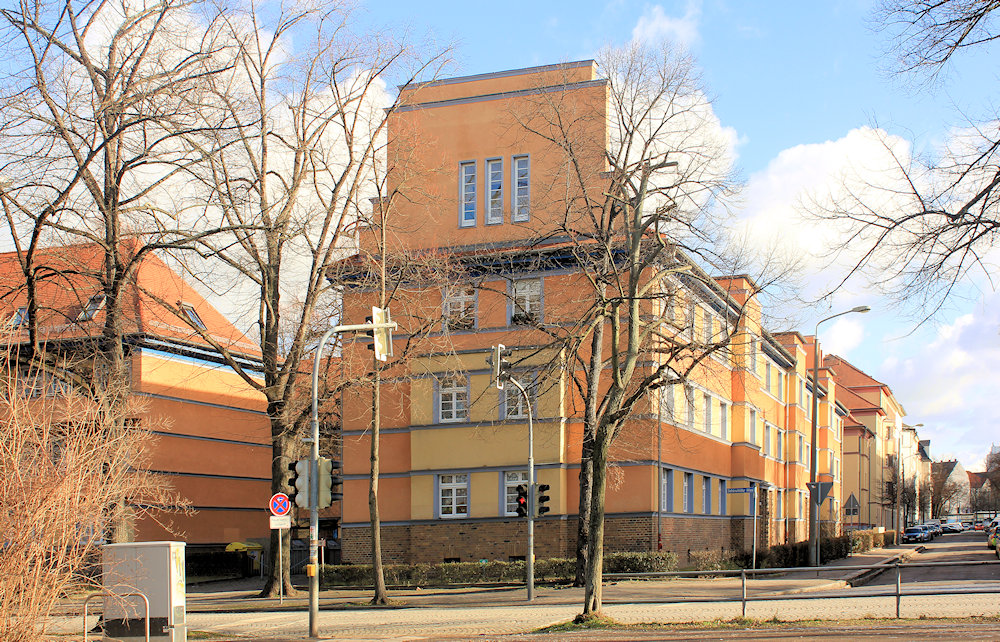Stepped Gables
–Expressionist Characteristic–
A stepped gable is a roof edge that rises in a stair-step shape instead of forming a simple triangle.

Apartment house with a prominent stepped gable facing an intersection
Stepped gables were popular across Europe during the Middle Ages, especially in Gothic architecture. Many historic examples can be found in Northern Germany, such as the town hall in Parchim, the old town hall in Mölln, and the Kerkhoffhaus in Rostock.
In 1920s architecture, stepped gables made a small comeback in Expressionist architecture. Expressionism often drew on Gothic elements, using it as a way to show continuity with local tradition while reinterpreting it in a modern, emotional way. They were simplified, stripped of ornament and reduced to geometric outlines that appeared bold and dramatic.

Town hall from 1928/29
Post office from 1925

Branch of the central bank from 1926/27

Police station from 1927